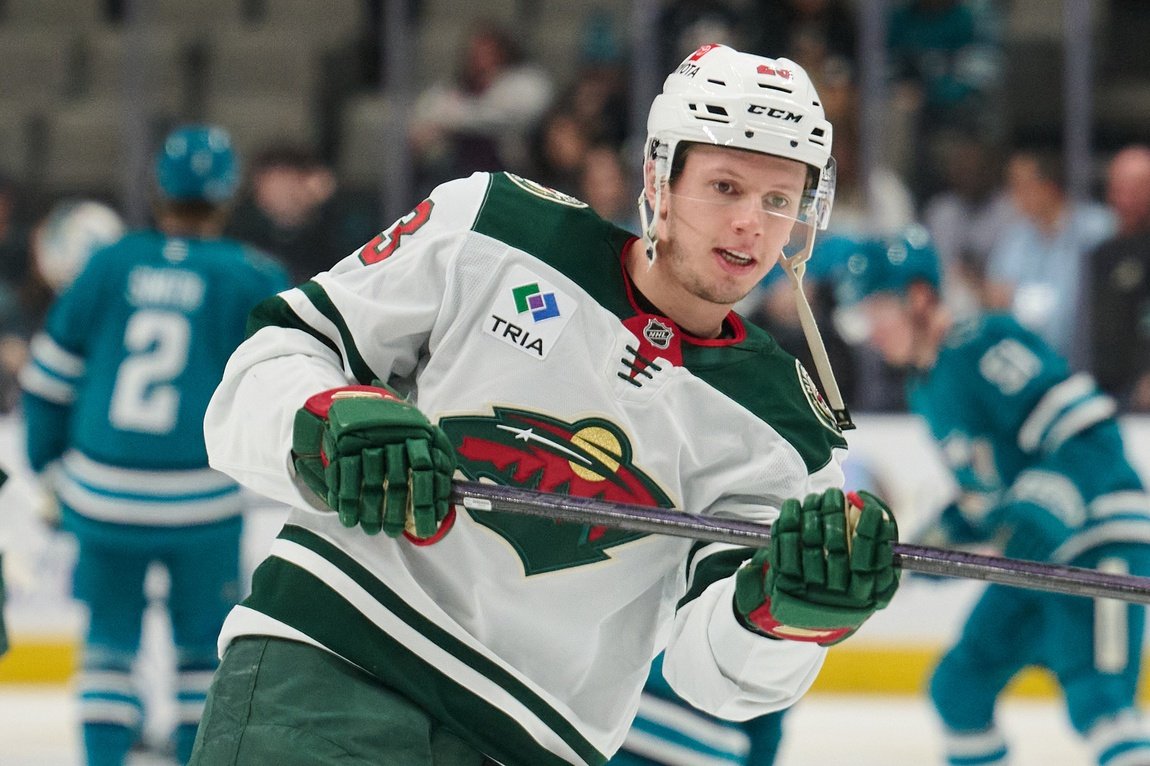
Marco Rossi is a hockey blogger’s dream. Drafted 9th overall, he was undersized but supremely skilled. That combination made him a content factory. Following the draft, Rossi experienced life-threatening complications from COVID-19 and has gritted his way back to a development path typical of a top-ten draft pick.
Even during that development, he’s been reluctantly embroiled in quotes about needing more “F-you” in his game. He responded with two herculean offseasons, staying in Minnesota, thousands of miles from his home in Austria, and missing his sister’s wedding in 2023.
He’s answered every question about his 5-foot-9 frame by dominating at the offensive net-front this season, establishing himself as a top-six forward at just 23 years old. He commands the love of fans and the thousands of words that have already been published about his young NHL career.
Because so much ink has been spilled figuring out what Marco Rossi is, the typical content has fallen by the wayside. With his contract up for extension this summer, it’s time to dive into another blogging mainstay.
How much money will Rossi demand in his next contract?
Marco Rossi is a restricted free agent this summer. That means that if another team offers him a contract, the Wild have the right to match the contract. If Minnesota chooses not to match the offer, the other team must provide draft compensation to the Wild based on the average annual value (AAV). A higher AAV means higher draft compensation.
That dynamic depresses Rossi’s market value because his value to any team besides the Wild is his on-ice value minus the value of the draft compensation. For example, if the Chicago Blackhawks offered Rossi four years at $7 million AAV and the Wild refused to match it, Chicago would give Minnesota their 2027 first- and third-round picks.
So, Chicago would need to consider Rossi to be worth the value of the $7 million salary cap hit, plus the value of those two picks.
That leaves us with a basic math problem. What is Rossi’s on-ice value against the salary cap, and what’s the value of those two picks?
The Athletic’s Dom Luszczyszyn has produced a robust analytical model that can help answer the first question. The diminutive Austrian has been extremely effective at five-on-five this season, driving a $7.8 million market value.

That’s a significant jump from last year’s performance -- about a 65% improvement. Part of that is a 5.4% increase in the salary cap, which drives up every player’s market value in the model by that amount. However, the rest of it is based on Rossi’s play. That raises a major core question:
Is this season an outlier?

It makes sense that a 22-year-old rookie would make significant strides in his age-23 season, but how much is sustainable? Rossi’s goals and assist numbers are in the 81st and 84th percentile, while his xGoals (a measure of scoring chance quality) are only in the 70th percentile.
That could indicate that he’s due for some regression, but it can also suggest that he’s a skilled passer and finisher. That type of player improves the value of scoring chances for himself and his teammates -- generally the kind of player you’d like to have in your organization.
Perhaps this is one of the sticking points that has made negotiating Rossi’s deal so complicated. From one lens, the Wild might see him as the top-ten draft pick they hoped for: a skilled player with a nose for the net. However, from an analytical lens, there is reason to suspect Rossi has been running hot in this breakout year and is due for some future regression.
So, let’s cool that $7.8 million number off. $7 million seems fair -- it encapsulates Rossi's growth from last year but leaves room for regression. But speaking of year-over-year growth, how much should the Wild predict Rossi to improve in the next few seasons?
Projecting player growth is not a perfect science, especially when working with only two seasons of NHL data. Luszczyszyn hasn’t published his model’s projection for Rossi’s aging curve, but we can work backward from his model of Boldy’s age curve to get a rough estimate.
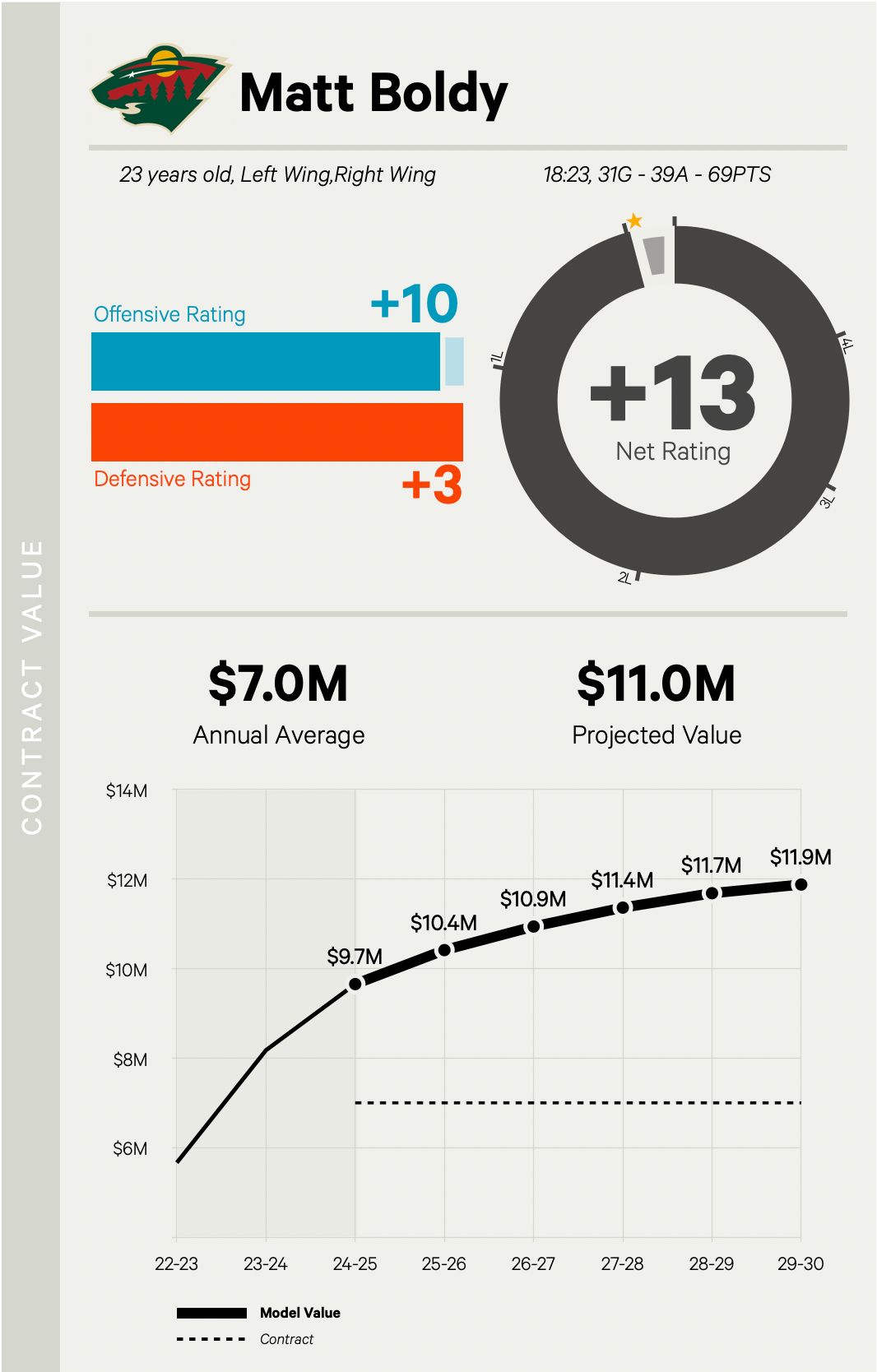
Again, these numbers aren’t just based on Boldy’s development and aging. They also include old salary cap projections. Separate Boldy’s projection from salary cap changes and adjust for updated cap estimates, and we can tack that onto Rossi’s estimated current value of $7 million.
I also shifted Boldy’s timeline forward by a full year so that the increases corresponded to the number of years after each player’s draft, respectively. One notable issue with this method is that while Boldy was drafted a year earlier than Rossi, he’s only six months older. This projection may be overly optimistic about Rossi’s future development. To stay on the safe side, I’ll lean into the $7 million current value going forward rather than the $7.8 million.

So, that gives us a good estimate of Rossi’s on-ice value against the salary cap. All that’s left to do to project the actual contract price is to consider the value of draft compensation.
We can use Brock Faber’s contract to estimate the value of the draft compensation in a Marco Rossi offer sheet. When he signed, Faber gave up an estimated $13.6 million of surplus salary cap value.
Faber’s $8.5 million AAV complicates this math, though. An offer sheet at that AAV would cost another team a first-, second-, and third-round pick, while Rossi seems unlikely to reach the $7.21 million AAV necessary for that threshold. Using past draft pick trade values, we can estimate that a first- and third-round pick is about 82% of the value of Faber’s theoretical offer sheet compensation. 82% of $13.6 million is about $11.15 million. That’s how much Rossi’s RFA years suppress his market value.
Finally, 900 words later, we have enough to estimate a four-year contract for Marco Rossi. His on-ice production should be worth about $39.94 million, and his RFA market should be about $11.15 million below that. Averaged across four years, that’s exactly a $7.20 million AAV. Any higher than that, and the draft compensation would force his AAV lower.
That number may also end up higher than Rossi’s four-year deal. Bill Guerin has indicated as much based on Michael Russo’s recent reporting. “If Rossi’s looking for a long-term deal in the $8 million range, that could be the type of contract Guerin has no appetite in signing him to,” he wrote in early February. “Same thing if he’s seeking a Quinton Byfield-like bridge deal (five years at $6.25 million per).”
Some of that might be posturing. Ultimately, it’s Guerin’s job to sign Rossi as cheaply as possible, and 31 other GMs are working alongside him in a fight against the rising tide of NHL contracts in light of massive upcoming salary cap projections. Byfield’s deal looked absurdly team-friendly by Luszczyszyn’s model at the time of signing, and that was before reports of the impending cap explosion.
The Los Angeles Kings drafted Byfield in the same year as Rossi and extended him a year sooner, which only makes value more favorable by comparison. Still, it’s also notable that Byfield’s production this year has not lived up to his 2024-25 projection from the $8.6 million at the time of signing.

Let’s also get back to that other nugget from Russo about a long-term contract. What could a longer contract look like for Rossi?
Guerin has struck gold on two similar contracts in the past. Brock Faber and Matt Boldy’s eight-year deals are trending toward some of the best in the NHL. Boldy’s contract has consistently paid dividends, which will kick into overdrive with the rapidly expanding salary cap.
Like Byfield, Faber has underperformed his projection this year, but the future cap increases seem to have balanced that problem. Furthermore, his two-way play style fits exactly what NHL teams crave and the defensive style that Hynes and Guerin seem intent on playing in Minnesota.
Guerin has given the public impression that he’d like to wait and see more from Rossi before making a long-term commitment; however, it’s hard to imagine that he would oppose a long-term contract like the one he signed with Boldy and Faber.
The lack of comparables is part of the trouble with projecting Rossi’s long-term value. After 2030-31, we run out of Boldy projections off which to piggyback. The numbers we used to estimate Rossi’s four-year value already include several assumptions, but more are necessary to derive an eight-year estimate.
For those seasons, let’s assume that Rossi’s age-related in 2031-32 and 2032-33 is about equal to 3% cap inflation.

The final years of that contract would be worth $45.7 million. Add Rossi's first four years at $18.79 million, and that’s a $9.3 million AAV.
Under this type of deal, Rossi would likely accept a below-market rate, given the security it offers. After all, he’s brushed with career-threatening illness before. On top of that, Faber and Boldy likely signed their deals with the same dynamic in mind. Maybe that $9.3 million AAV could get chipped down to $8.5 or $8 million.
But, if Guerin really is opposed to $8 million per year on an eight-year contract, perhaps there’s no long-term deal to be had. It’s a tough sell for any agent to give up so much just for the sake of security. Rossi is playing at an unbelievable level in a contract year. If Guerin wants to see more from the player, and the player wants a chance to prove this year isn’t a fluke, a four-year bridge contract might be more appealing to both parties.
It also makes sense for Minnesota to minimize Rossi’s contract in the short term. The organization wants to win a championship between this year and 2026-27. They’ve already committed to long-term contracts for Boldy and Faber, effectively increasing their AAV during RFA seasons to lower their overall cap hit.
The team has enough budget to afford a Kaprizov extension, but it will take up a lot of cap space. Furthermore, deals for aging players like Jake Middleton, Marcus Foligno, Mats Zuccarello, Ryan Hartman, and Yakov Trenin are expensive win-now moves. There will likely be more such contracts this offseason if the rumors of Brock Nelson and other free agents are true.
All of these reasons suggest keeping Rossi cheap now and planning for an expensive payday after a four-year deal.
No term is off the table. Guerin has done well on long-term deals with budding stars before. However, the team may squeeze Rossi’s contract for short-term gains to maximize the team’s Stanley Cup window. Both plans have their merits.
With any luck, this offseason will keep Rossi around for a long time. Failing that, he will at least become a key contributor to what the Wild hope is a historic era in franchise history.
Think you could write a story like this? Hockey Wilderness wants you to develop your voice, find an audience, and we'll pay you to do it. Just fill out this form.
-
 1
1
-
 2
2

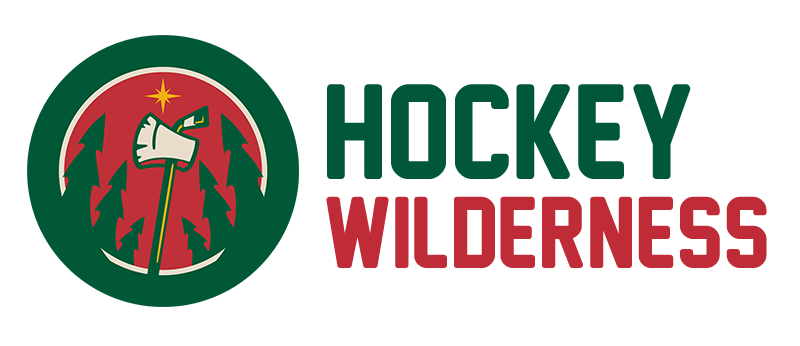

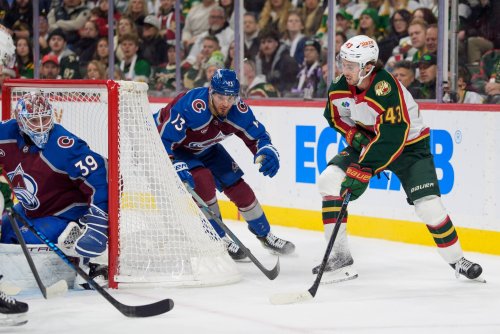
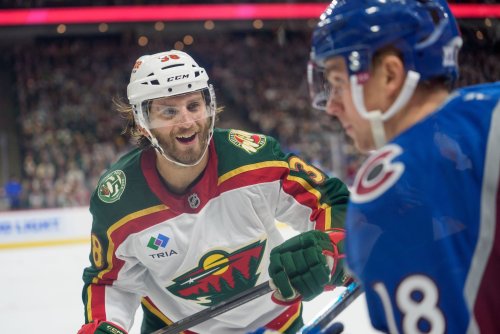



Recommended Comments
Join the conversation
You can post now and register later. If you have an account, sign in now to post with your account.
Note: Your post will require moderator approval before it will be visible.